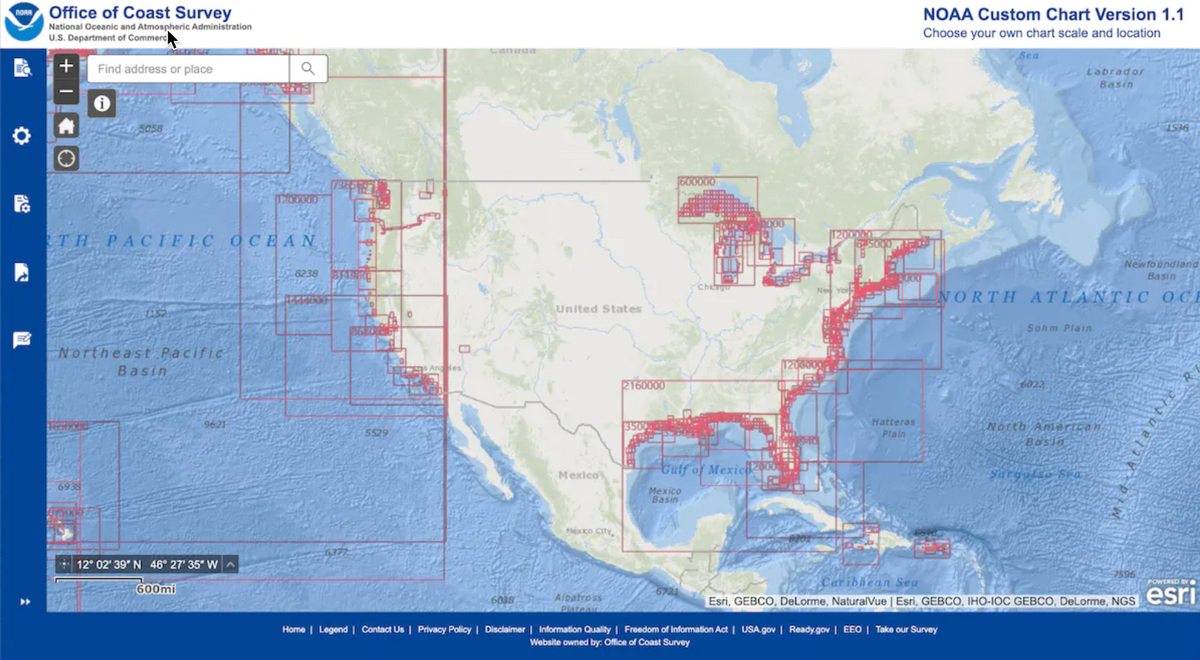NOAA’s system update and the next era of electronic charts
A Future Tides interview with NOAA navigation manager Crescent Moegling about the role of technology in the National Charting Plan, which will sunset raster nautical charts

Meet Crescent Moegling, the navigation manager for the Northwest and Pacific Islands region at the National Oceanic and Atmospheric Administration (NOAA). Based in Seattle, she is a subject matter expert in all things charting and the products and services NOAA provides.
In her role, Moegling acts as a community liaison, engaging with recreational boaters and commercial mariners about NOAA’s products. She also spends a lot of time using mapping and GIS (geographic information system) technology and providing technical guidance.

Here are takeaways from her interview with Future Tides in October 2021 about the role of technology in NOAA’s National Charting Plan, which will sunset raster nautical charts, and the agency at large:
The National Charting Plan
NOAA, like any product or service creator, can’t innovate and maintain products forever, similar to why even the most popular apps eventually stop being available on older phones.
In short, the National Charting Plan was developed because maintaining the dual systems of raster charts and electronic navigation charts (ENC) is not sustainable for the agency.
Starting in 2011, annual ENC sales surpassed paper chart sales and skyrocketed from there. The popularity and widespread adoption of ENC systems, makes the current strategy a natural transition for many, but not all, boaters.
These changes also mirror technology’s impact across other industries and society as a whole.
Advances in technology not only improved the distribution of charts but also the collection of high resolution bathymetry for more accurate charts. Ongoing maintenance and updates became quicker and more frequent.
“Essentially, technology is really what has driven it,” said Moegling, referring to the transition.
The user-experience mindset
User experience (UX), feedback loops and user profiles are popular among tech product thinkers. NOAA also seems to be applying this design mindset to the National Charting Plan among other projects.
As it related to charts, Moegling identified two main user groups:
- Recreational boaters, who may or may not be users of electronic chart technology, are the biggest group of chart users.
- Commercial mariners, while a smaller user group overall, have different needs along with more established technical skill sets.
“We are really trying to treat it in some ways like a software release,” Moegling said.
Like Microsoft releasing Windows 11, they want to steer people towards this platform because they aim to develop the best, most user friendly, yet also familiar, product possible. That’s no easy task.
Also, like for many Windows users, the changes made on the back-end technology are irrelevant, it’s their experience as an end-user that matters.
What’s next
Despite concern from boaters who prefer traditional navigation practices or view electronic navigation systems as less reliable, electronic charting technology is no longer in its infancy. The technology has existed for more than 30 years with international standards established in 1995.
With that in mind, sunsetting the raster system may prove to be an innovative time for further development and enhancement of the ENCs.
Moegling is excited about future features such as bringing in more environmental data (wind, tides, currents, etc.) and bathymetry to visualize the sea floor below in 3D.
Combined, these features will allow for “precision navigation,” especially in port waterways. Moegling describes this ability to have a complete understanding of “every single possible environmental factor that is going to influence a decision for a mariner.”
For recreational boaters, the bathymetry layers may be more of a scientific novelty, a “wow” factor. While for commercial pilots, it would allow them to more precisely navigate depths. Improved tide and currents data can be useful to all boaters from paddle boarders to the largest container ships.
In any of these scenarios, the overall benefit depends on users being educated about new and evolving features, and no matter the technology, that’s still part of Moegling’s job.
